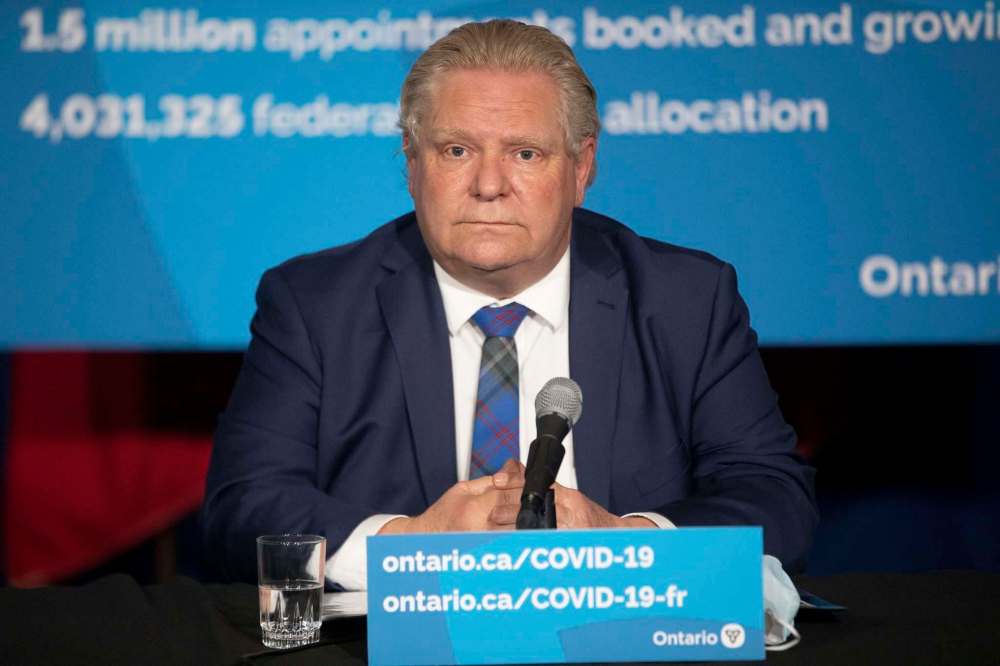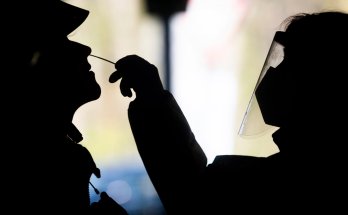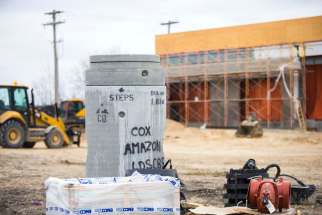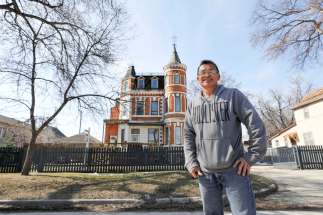Heightened restrictions might not be enough
Read this article for free:
or
Already have an account? Log in here »
To continue reading, please subscribe:
Monthly Digital Subscription
$0 for the first 4 weeks*
- Enjoy unlimited reading on winnipegfreepress.com
- Read the E-Edition, our digital replica newspaper
- Access News Break, our award-winning app
- Play interactive puzzles
*No charge for 4 weeks then price increases to the regular rate of $19.00 plus GST every four weeks. Offer available to new and qualified returning subscribers only. Cancel any time.
Monthly Digital Subscription
$4.75/week*
- Enjoy unlimited reading on winnipegfreepress.com
- Read the E-Edition, our digital replica newspaper
- Access News Break, our award-winning app
- Play interactive puzzles
*Billed as $19 plus GST every four weeks. Cancel any time.
To continue reading, please subscribe:
Add Free Press access to your Brandon Sun subscription for only an additional
$1 for the first 4 weeks*
*Your next subscription payment will increase by $1.00 and you will be charged $16.99 plus GST for four weeks. After four weeks, your payment will increase to $23.99 plus GST every four weeks.
Read unlimited articles for free today:
or
Already have an account? Log in here »
Hey there, time traveller!
This article was published 26/04/2021 (1696 days ago), so information in it may no longer be current.
Watching Ontario Premier Doug Ford as he twists in the wind of public disfavour, Manitoba’s Brian Pallister on Monday slightly tightened restrictions on gatherings where the COVID-19 virus may be passed from one Manitoban to another. If he’s lucky, he has made this move in time to forestall a public-health catastrophe.
In similar circumstances in October, Mr. Pallister’s government hesitated. The province cracked down on shopping and social gatherings starting Nov. 12, when the daily new cases had already reached 400 a day. As a result, Manitoba had a terrible November with the number of new cases reaching well above 400 a day and, by early December, Manitoba hospitals were in danger of being overburdened by 360 COVID-19 patients.
This time, the government is making its move while daily case counts hover around 200, up sharply from 80 a day in late March. The effect on hospitals will be seen in the coming weeks, when the patients now newly infected start turning up at emergency departments.

Ontario, in similar circumstances, waited longer to act against the April surge and now is begging other provinces to send nurses, doctors, equipment and pharmaceuticals to help treat its patients, some of whom are being housed in tents strung up in hospital parking lots.
Mr. Ford drew heavy public criticism for a series of panic moves 10 days ago, when he closed all public playgrounds and asked police to stop people at random in the streets to demand their reasons for stepping out of their houses. After most municipal police forces said they were not going to do that, Mr. Ford thought better of it. He also reopened the playgrounds, and has been apologizing ever since for his misjudgment.
Recent reports from India also provide a stark warning to Canada’s public-health authorities and governments about the danger of waiting too long to impose restrictions. Patients are dying in the streets of India’s cities because the hospitals have no oxygen to offer them. The crematoriums are overtaxed because the number of deaths far exceeds the country’s crematorium capacity.

Back in January, India’s low COVID-19 numbers were the wonder of the world. It seemed then that the virus has passed India by — so much so that Prime Minister Narendra Modi was liberally authorizing export of India-made vaccines to countries in greater need.
India suffered close to 100,000 new infections per day in the September wave, but then enjoyed a dramatic drop in cases. Starting in March, however, the numbers climbed once again, reaching almost 350,000 cases per day in the past week. Because health services are spotty in wide sections of rural India, the numbers of COVID-19 cases and deaths are probably far greater than government records indicate.
Mr. Pallister and chief provincial public health officer Dr. Brent Roussin are trying to avoid a catastrophe on the scale of Ontario’s or India’s by acting more swiftly than they did last fall. They are trying to fine-tune the sizes of groups in restaurants, gatherings, gyms and churches so as to reduce crowd sizes a little, but without producing a shocking change in Manitobans’ habits.
So little inspecting has been done, however, that they know only a little about the private gatherings at which Manitobans are passing the virus to each other. The fine-tuning of provincial orders will have little effect on the people who are already disregarding the rules. These measures, while more prudently timed than last fall’s effort, might still prove insufficient to curb the pressure on hospitals.










